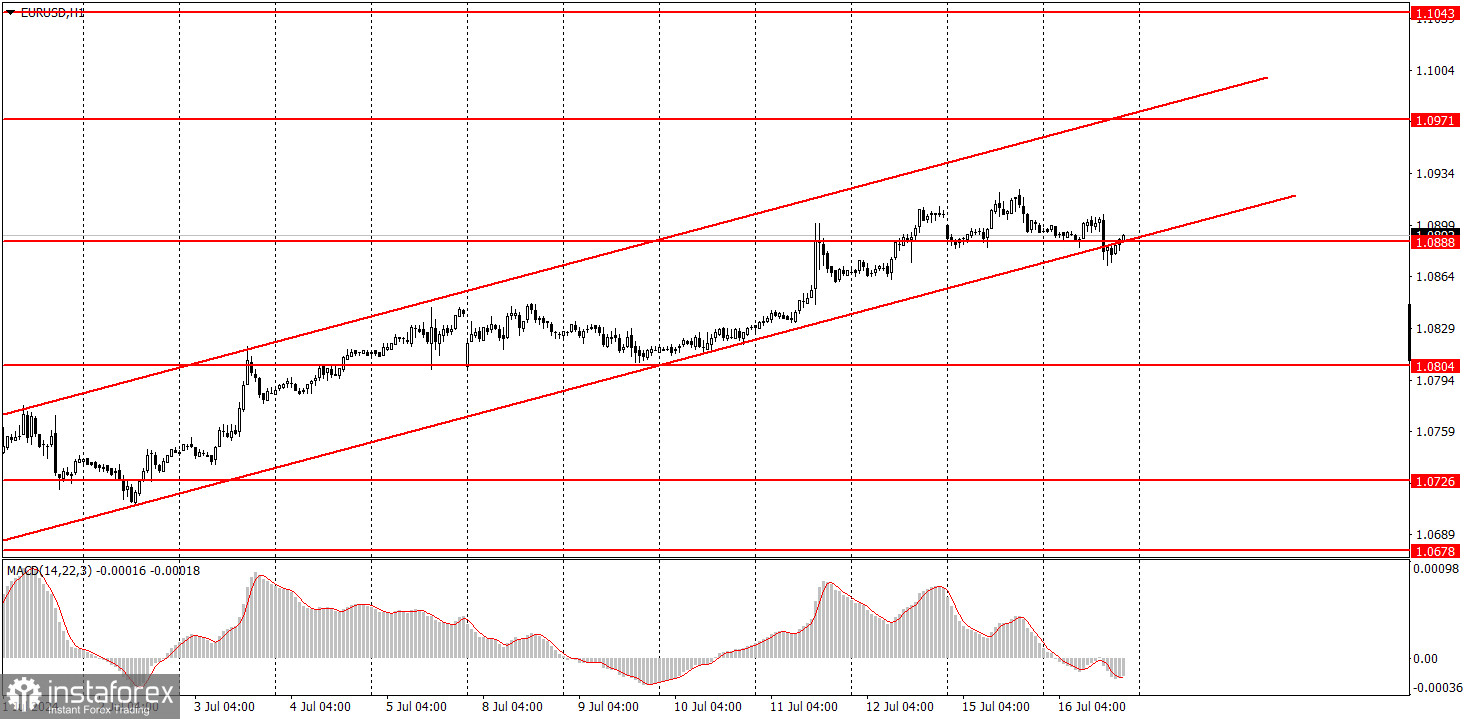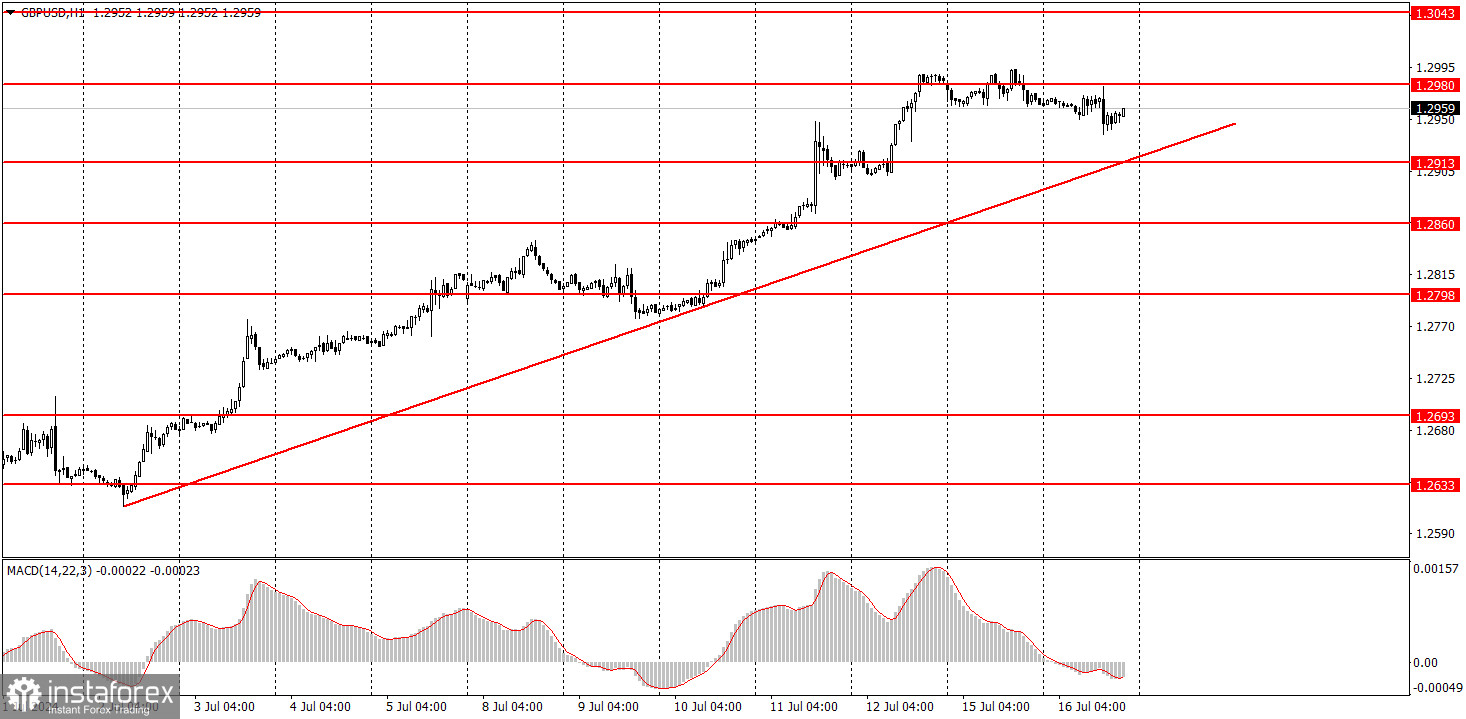Analysis of macroeconomic reports:

There are few macroeconomic events scheduled for Wednesday. The market may respond to today's reports with a very modest reaction. For instance, take the European Union inflation report for June. This will be the second assessment of the indicator, which is unlikely to differ from the first. In addition, inflation used to be important in terms of understanding how the European Central Bank would act. And now the answer to this question is obvious.
The same applies to British inflation for June. Despite the fact that the indicator may even fall below the 2% level, this will not in any way affect the mood of the Bank of England. It is obvious that the British central bank may start to lower rates as early as August if it does not decide to play it safe again. And in any case, the pound is not getting cheaper even with growing expectations of a rate cut in the UK. The rest of the day's reports are secondary of importance.
Analysis of fundamental events:

Among the fundamental events, we can highlight the speeches of Federal Reserve representatives Thomas Barkin and Christopher Waller. However, Fed Chairman Jerome Powell already spoke on Monday and even twice before that last week. His statements did not evoke any emotion in the market. Although the dollar had every chance to show growth, since Powell did not hint at a possible rate cut in September. Obviously, Barkin and Waller will have nothing to add to Powell's statements.
General conclusions:
On Wednesday, market participants may focus on the UK inflation report. It has at least a theoretical chance of provoking a strong market reaction. However, to be honest, we are not expecting one. As well as a strong fall in the pound, even if inflation turns out to be below 1.9%.
Basic rules of a trading system:
1) Signal strength is determined by the time taken for its formation (either a bounce or level breach). A shorter formation time indicates a stronger signal.
2) If two or more trades around a certain level are initiated based on false signals, subsequent signals from that level should be disregarded.
3) In a flat market, any currency pair can produce multiple false signals or none at all. In any case, the flat trend is not the best condition for trading.
4) Trading activities are confined between the onset of the European session and mid-way through the U.S. session, after which all open trades should be manually closed.
5) On the 30-minute timeframe, trades based on MACD signals are only advisable amidst substantial volatility and an established trend, confirmed either by a trendline or trend channel.
6) If two levels lie closely together (ranging from 5 to 15 pips apart), they should be considered as a support or resistance zone.
How to read charts:
Support and Resistance price levels can serve as targets when buying or selling. You can place Take Profit levels near them.
Red lines represent channels or trend lines, depicting the current market trend and indicating the preferable trading direction.
The MACD(14,22,3) indicator, encompassing both the histogram and signal line, acts as an auxiliary tool and can also be used as a signal source.
Significant speeches and reports (always noted in the news calendar) can profoundly influence the price dynamics. Hence, trading during their release calls for heightened caution. It may be reasonable to exit the market to prevent abrupt price reversals against the prevailing trend.
Beginners should always remember that not every trade will yield profit. Establishing a clear strategy coupled with sound money management is the cornerstone of sustained trading success.
 English
English 
 Русский
Русский Bahasa Indonesia
Bahasa Indonesia Bahasa Malay
Bahasa Malay ไทย
ไทย Español
Español Deutsch
Deutsch Български
Български Français
Français Tiếng Việt
Tiếng Việt 中文
中文 বাংলা
বাংলা हिन्दी
हिन्दी Čeština
Čeština Українська
Українська Română
Română

